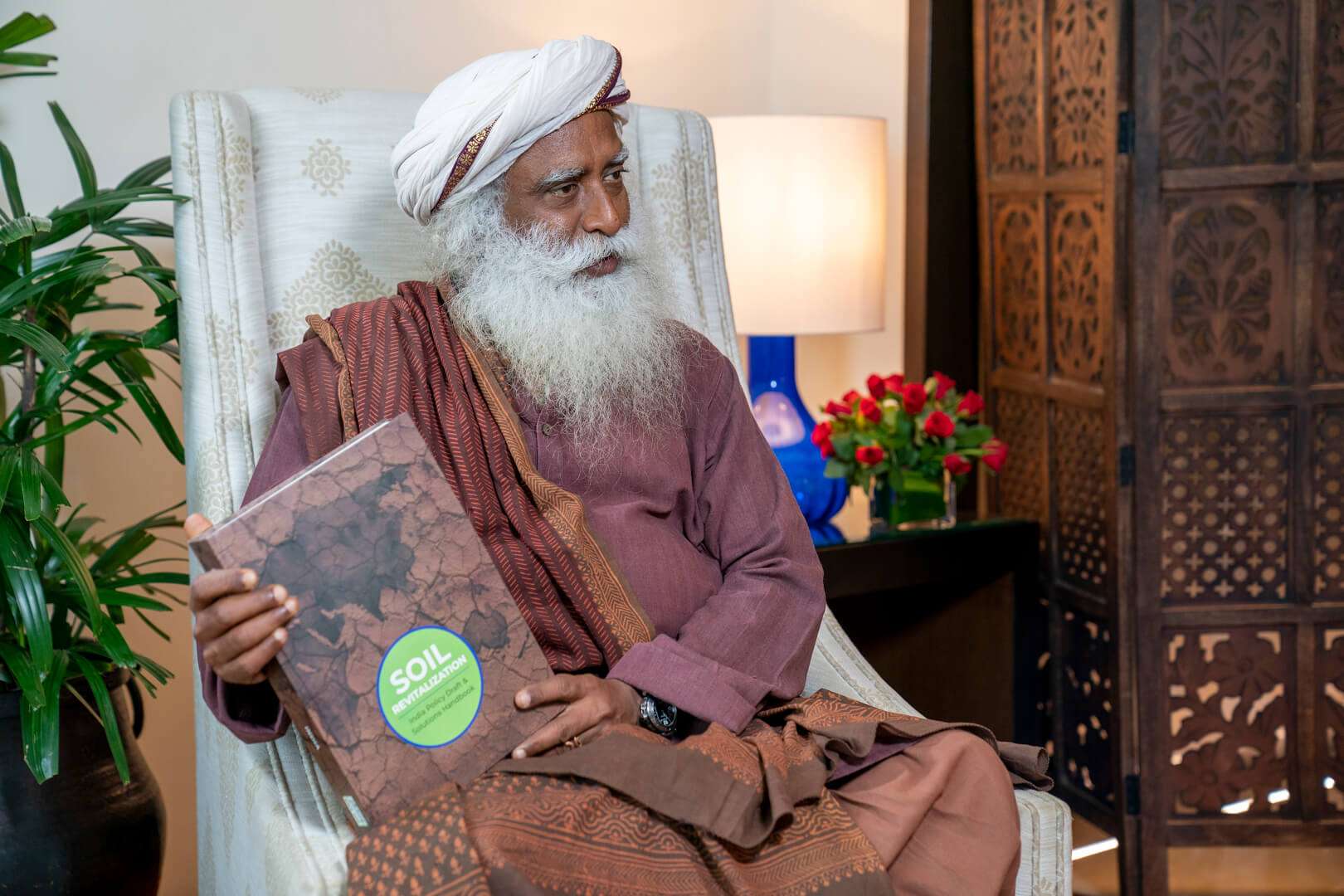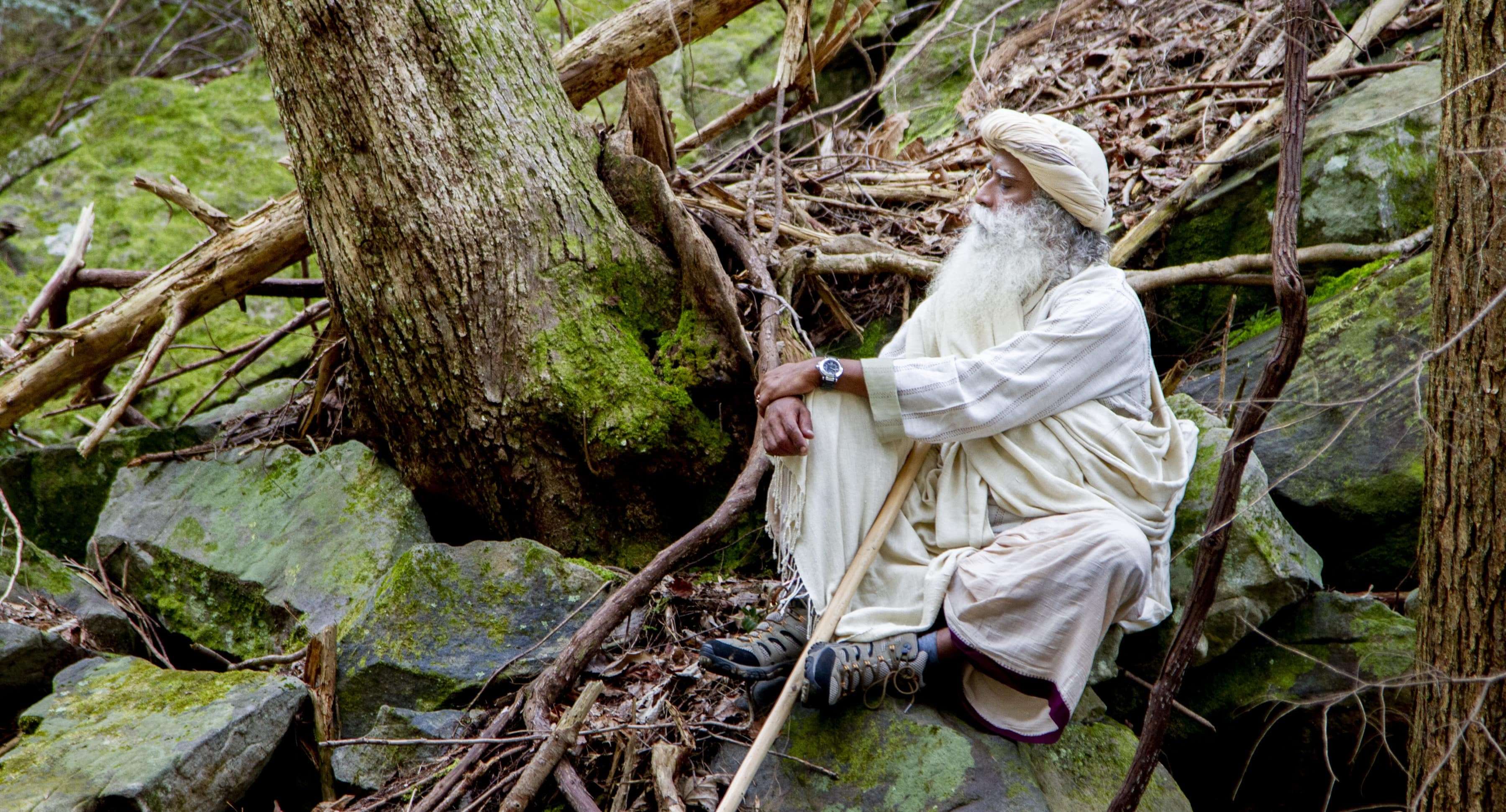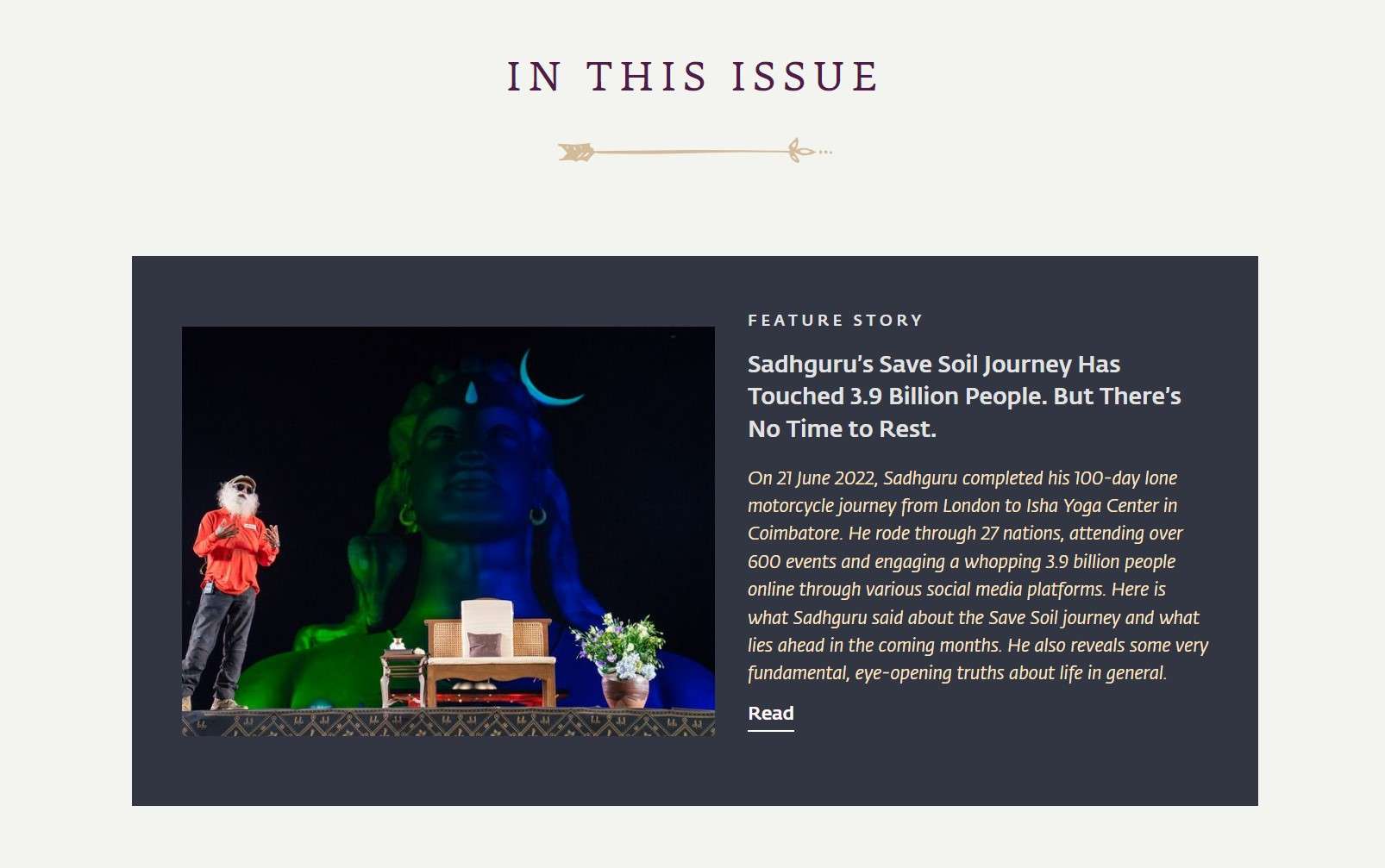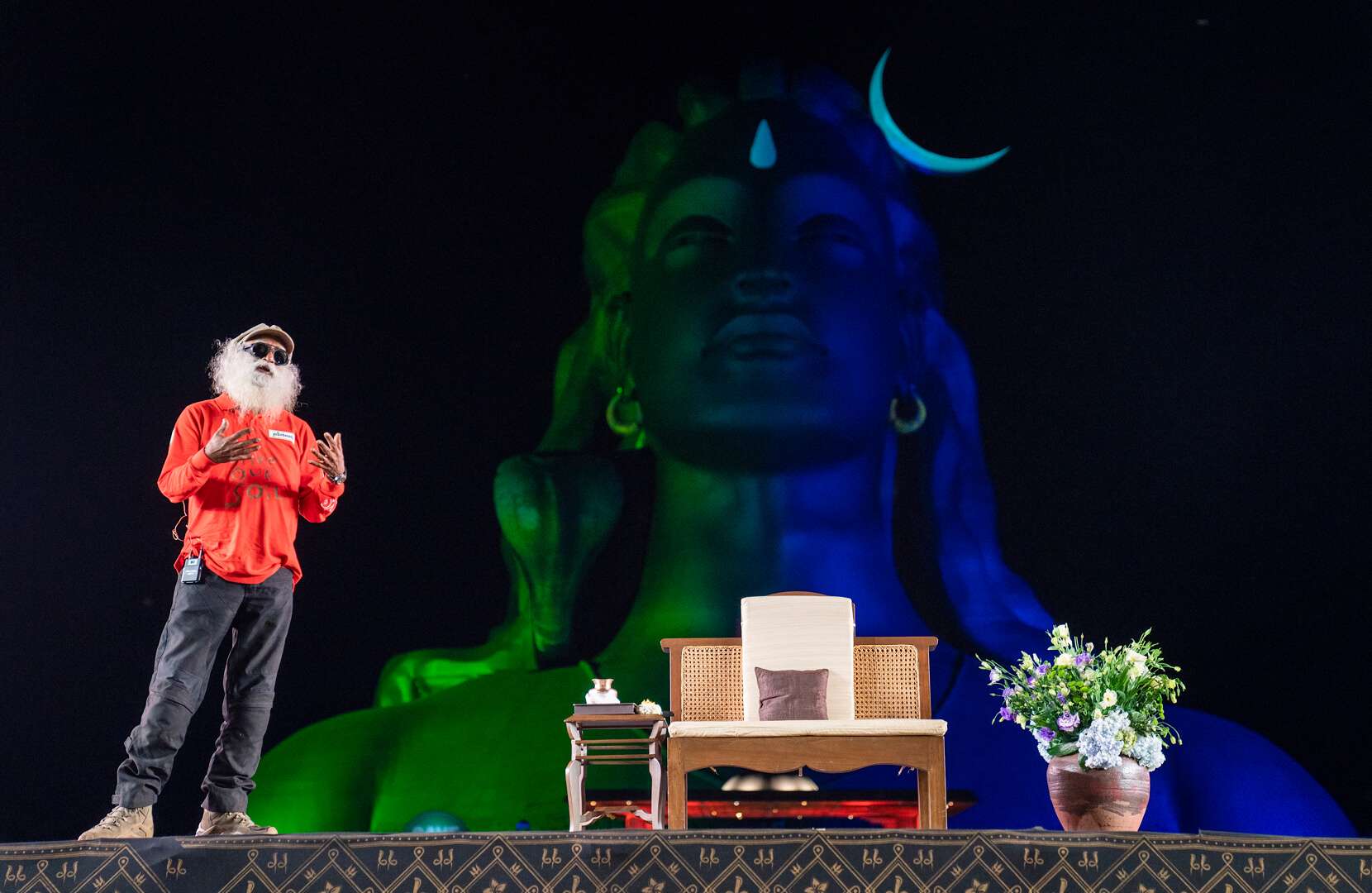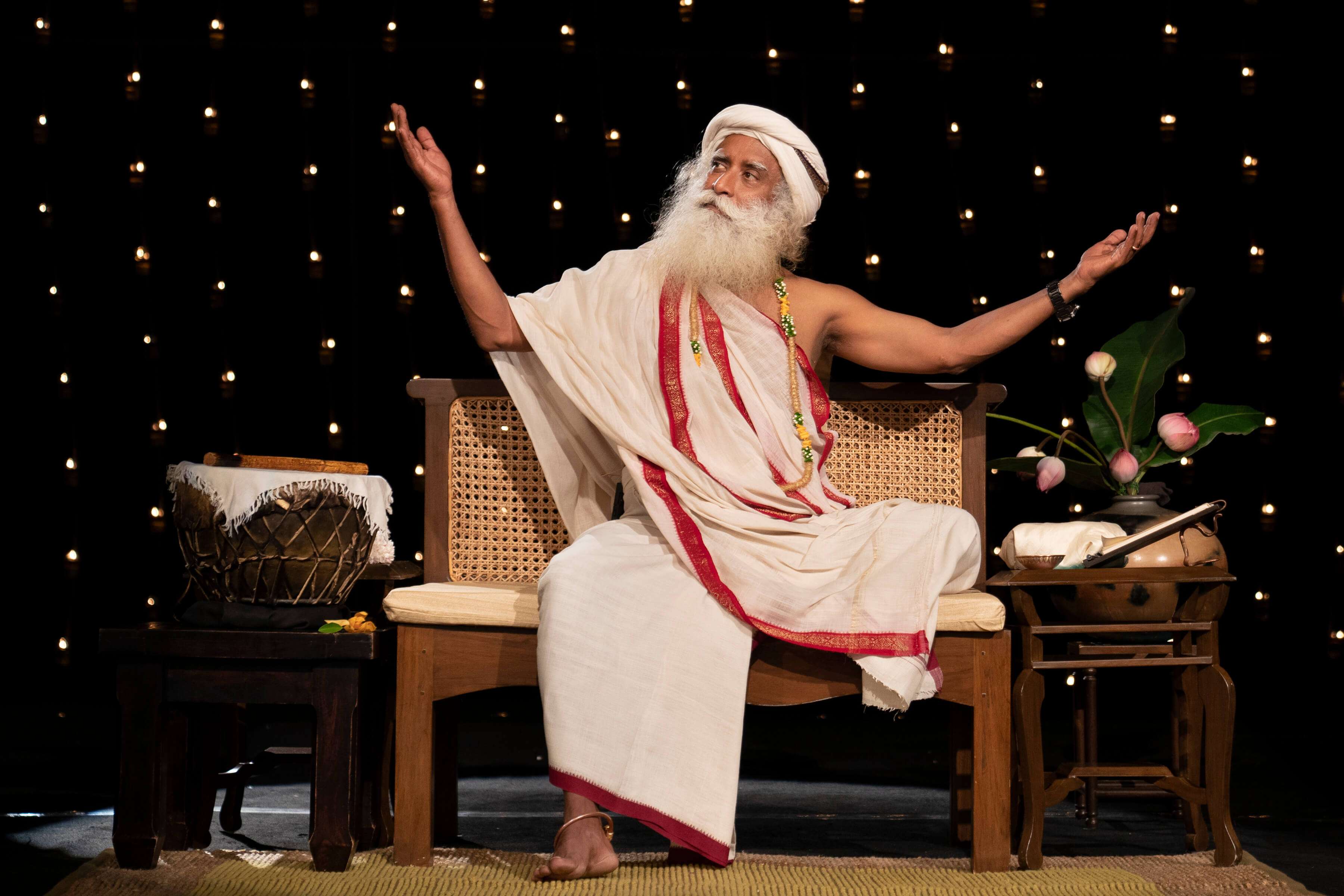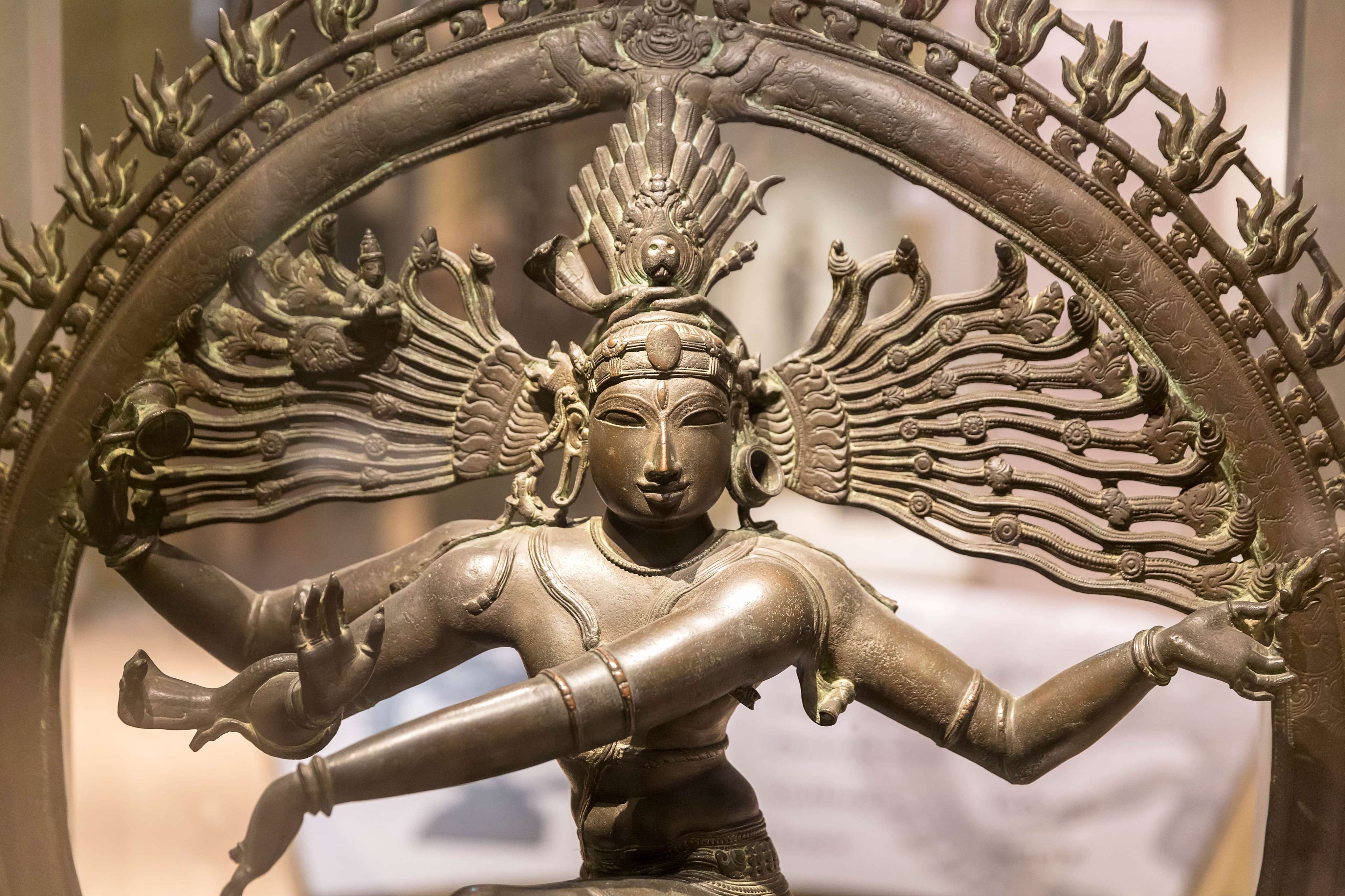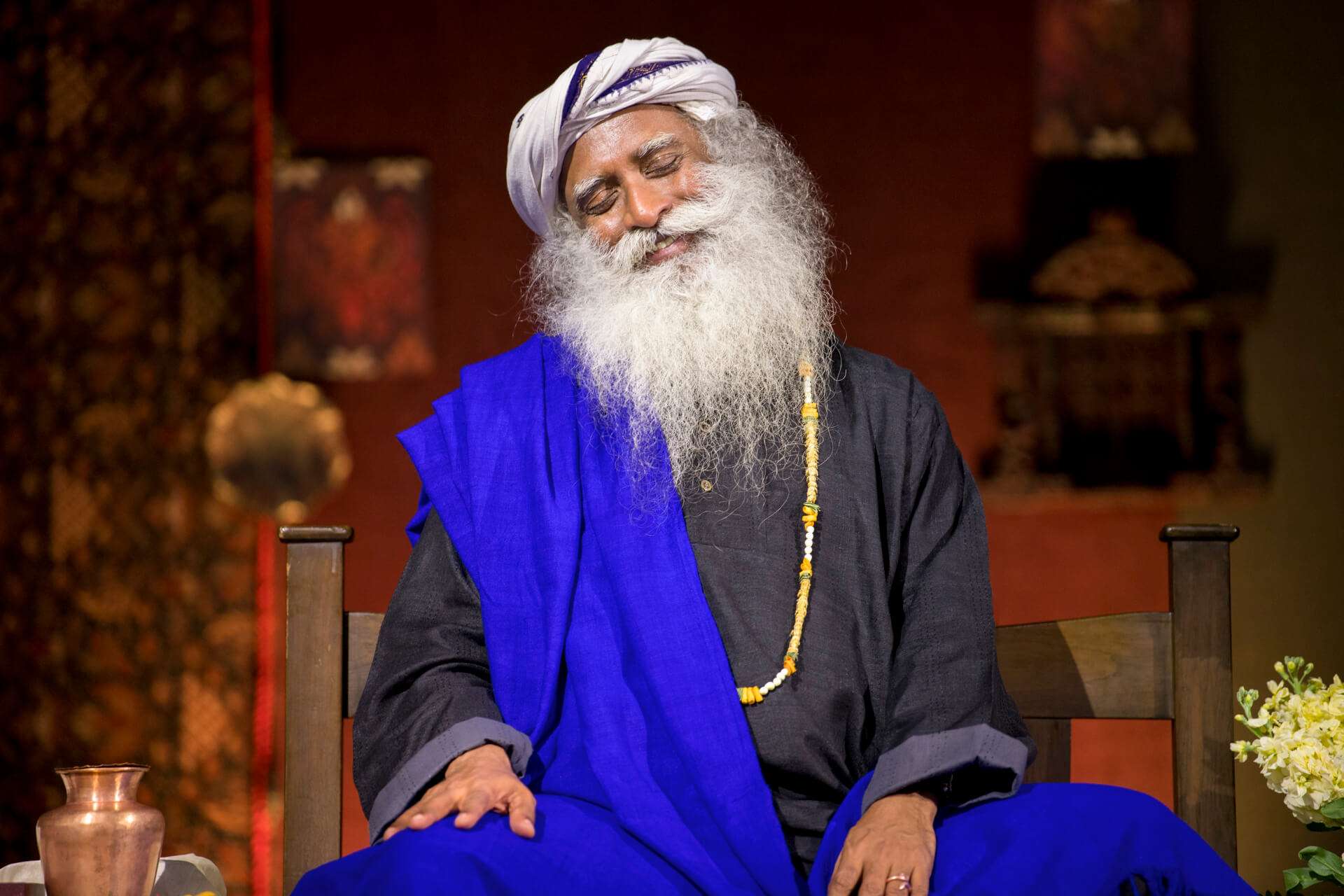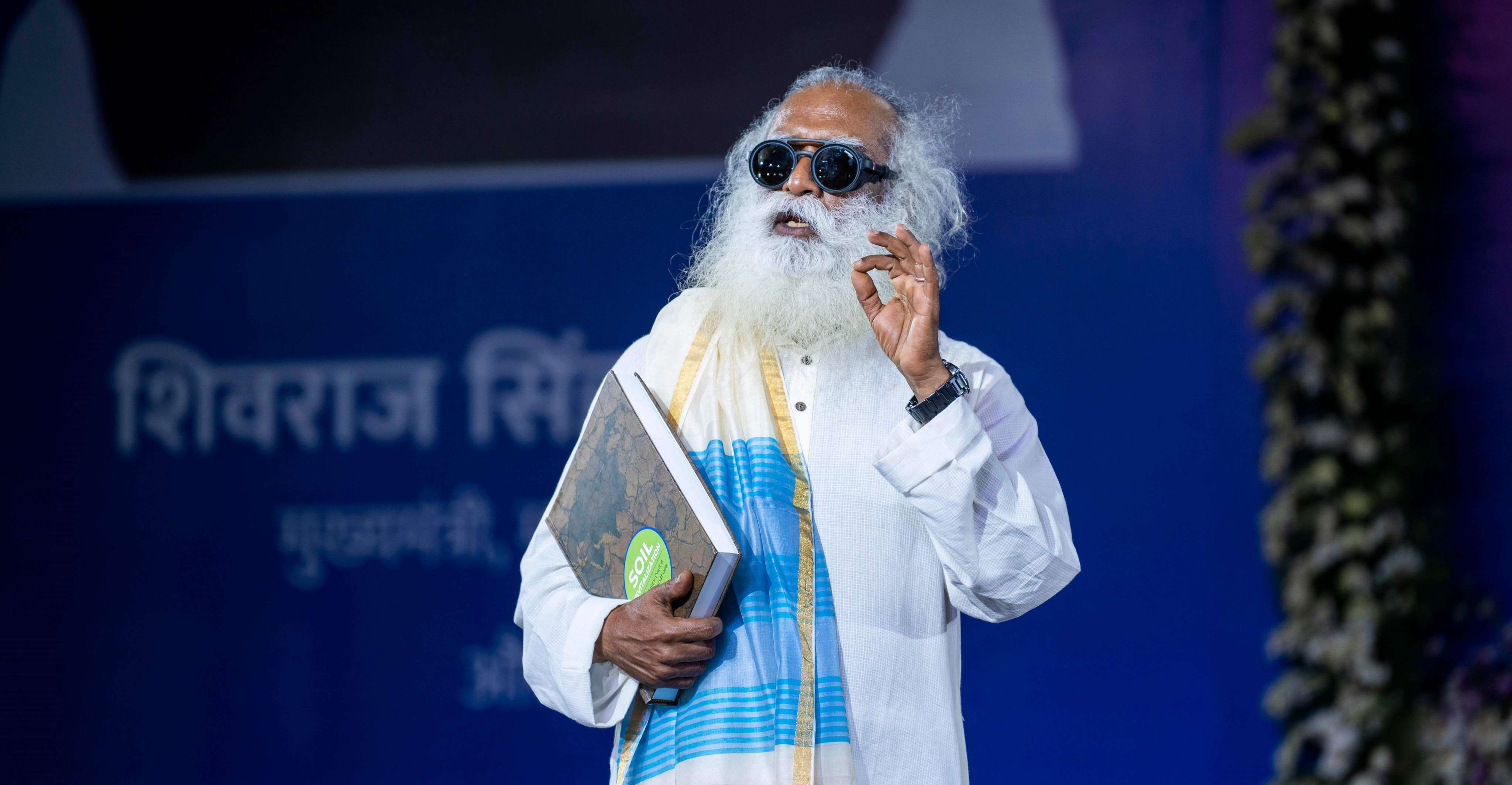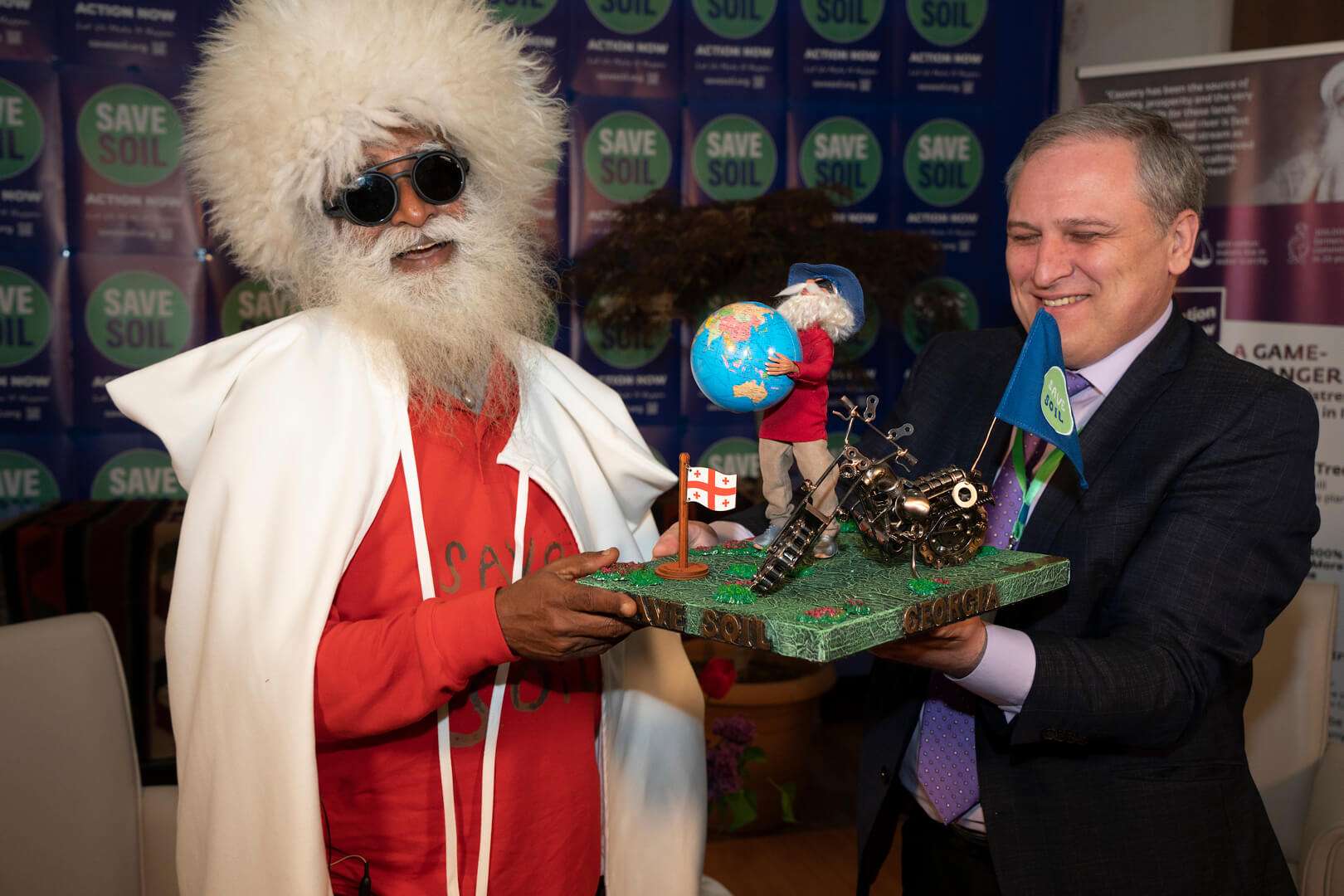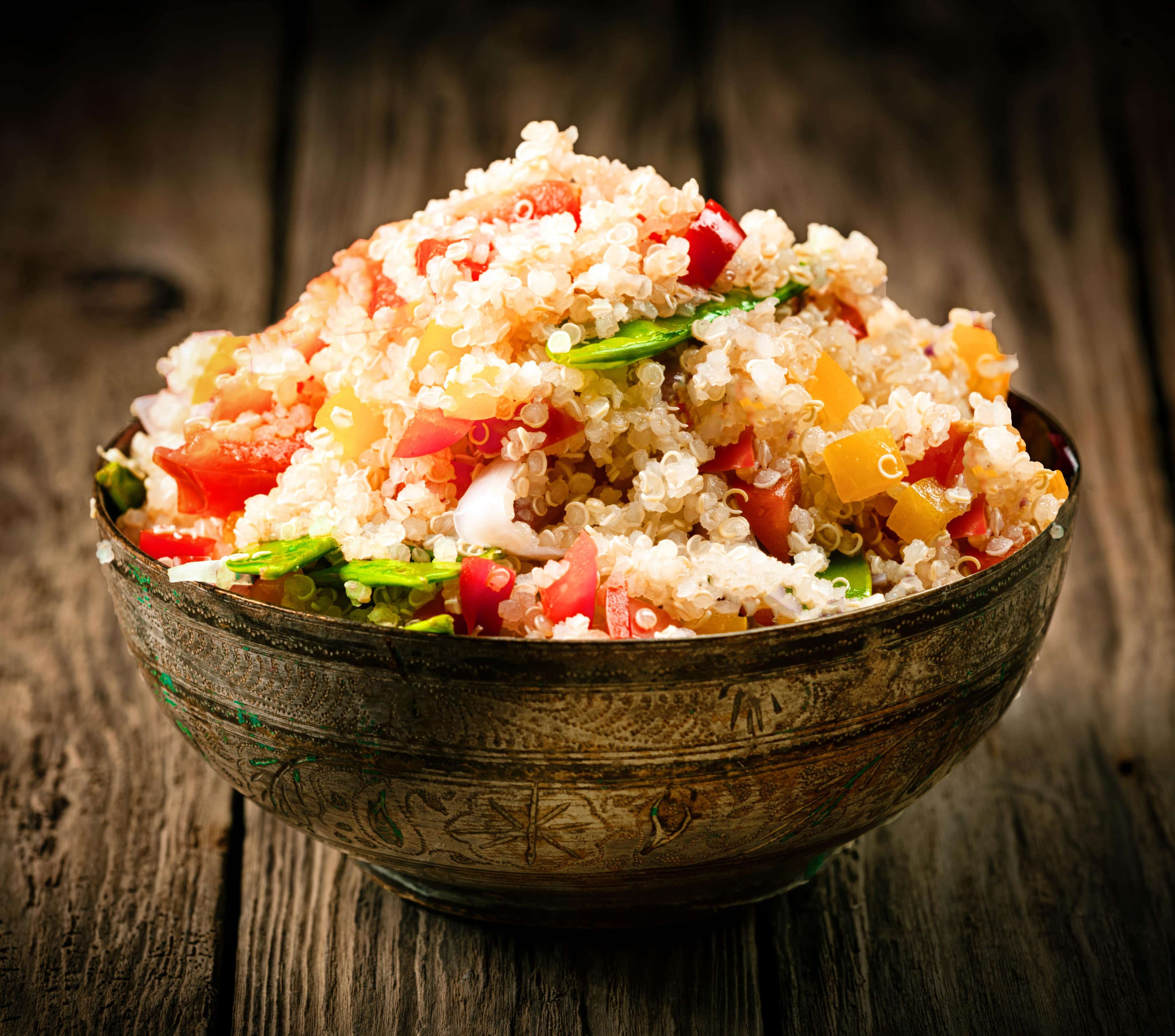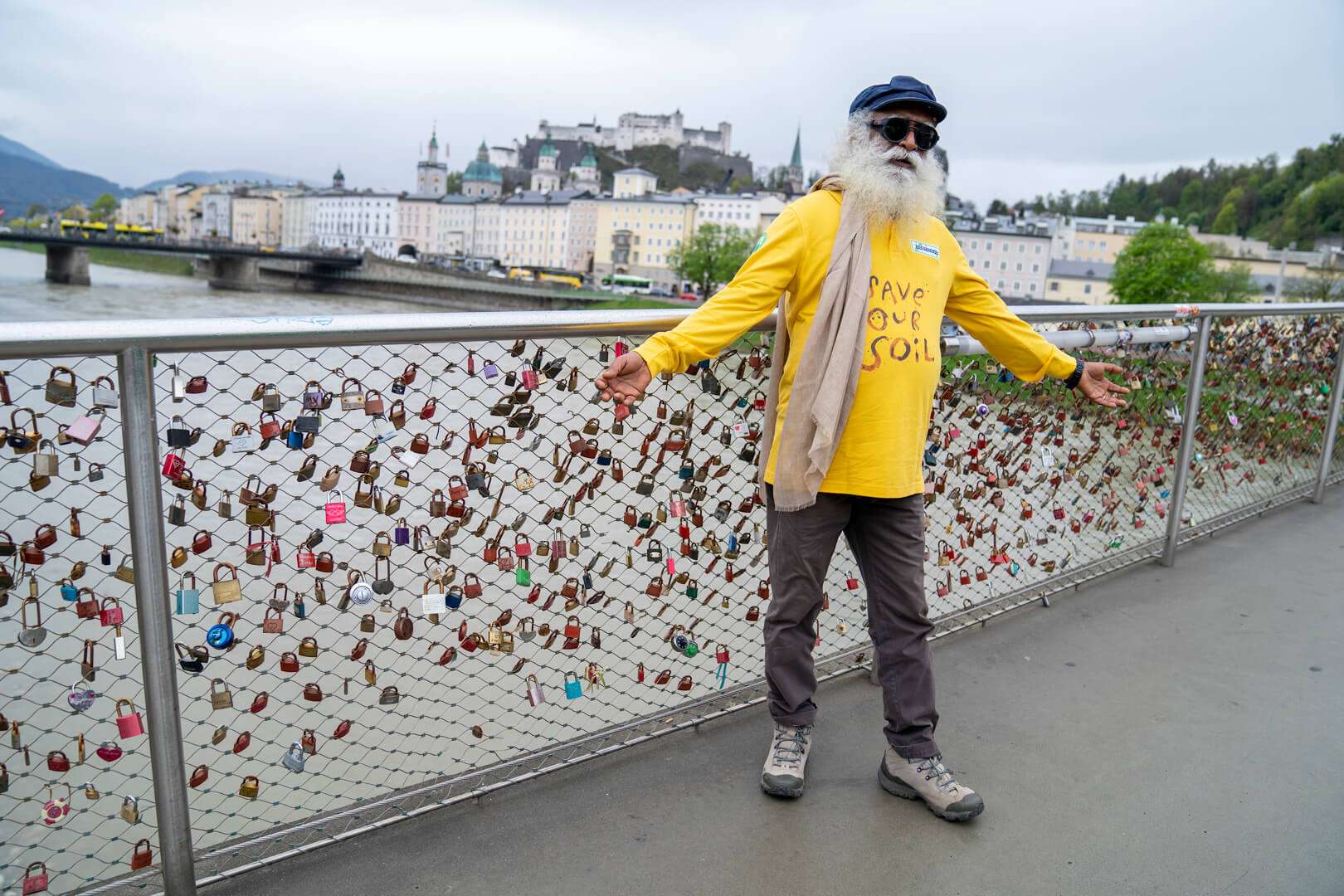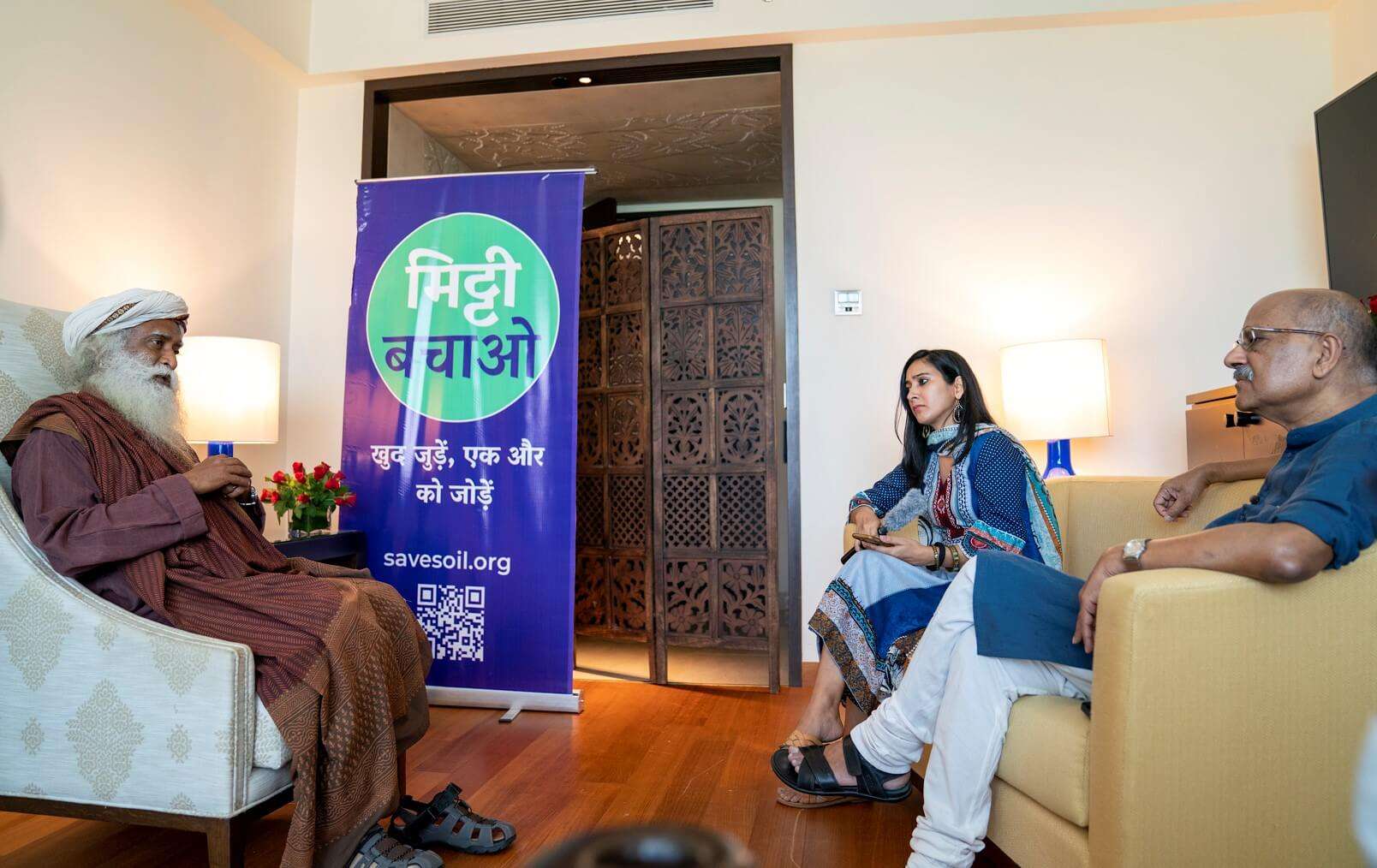
Shekhar Gupta: Tell us about how Save Soil is different from save water, save river, save environment, save carbon dioxide, save anything?
Sadhguru: Has someone tried to save carbon dioxide also?
Shekhar Gupta: I mean people try to reduce it…
Sadhguru: That is getting rid of it, not saving it.

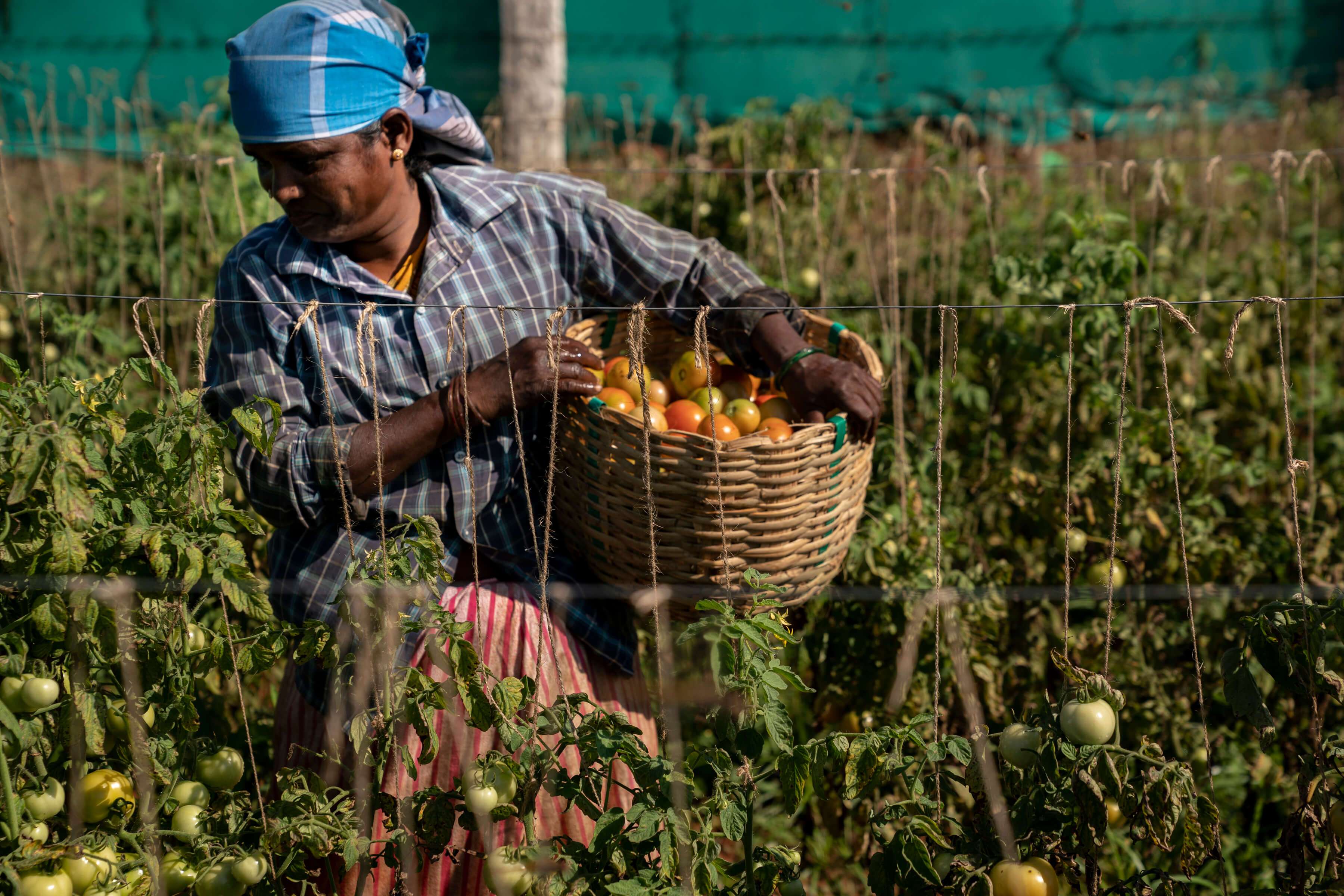
Not Only an Environmental but an Existential Issue
Sadhguru: Soil is the basis of our existence. And soil is a living entity, unlike carbon dioxide. Soil is the largest living system, not just on this planet but in the known universe. Though we as life are just a consequence of what is happening within the 15–18 inches of topsoil, unfortunately we have addressed it as an inert substance, used it as a resource, and brought it to a point where today soil scientists are using the term “soil extinction.” Soil extinction is extinction of life.
Soil is the largest living system, not just on this planet but in the known universe.
There are many other environmental concerns; I’m not saying they are not of significance – they are. But soil is the fundamental of life, the very foundation of our existence and future life on this planet. So, Save Soil is of a very different nature. Other environmental issues have economic aspects that are in conflict with them, and this is why there are endless debates about them. When it comes to enhancing soil organic content and soil richness, there is no lobby, no industry, and no human being on the planet who is against it; everyone is for it.
We want to separate soil from other complex ecological issues so that soil can be addressed as a life issue, as an existential issue, not as an environmental issue.

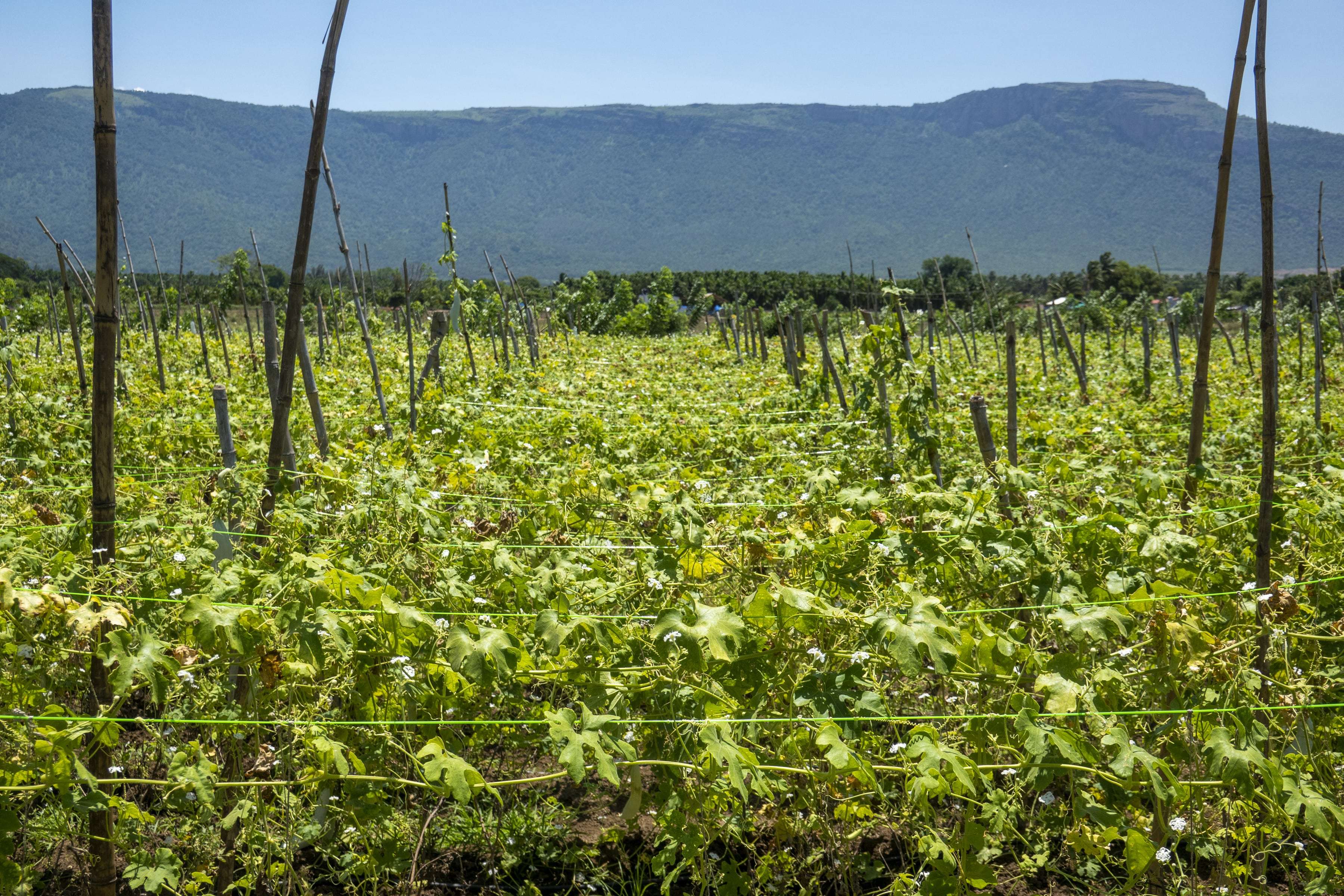
The Two Things We Need to Increase Organic Content
Shekhar Gupta: So, what do you mean by increasing organic content of the soil?
Sadhguru: Serving breakfast, lunch, dinner for the organisms. Soil is a living entity. A handful of soil can have more than 8–10 billion organisms in it.
Shekhar Gupta: That’s right.
Sadhguru: And there are zillions of organisms across the world and millions of species. To the extent that top soil scientists are openly admitting that they do not even know one percent of the organisms or the species present in the soil. So, that is the level of complexity. But right now, 27,000 species per year are going extinct on an average according to UNFAO[1].
Shekhar Gupta: So, how do you add the breakfast, lunch, dinner?
Sadhguru: There are only two sources of organic content: plant life and animal life. There is simply nothing else. Right now, if you look at farms, especially in large Western countries, or even in India, it is all brown soil and machines. There is no plant life or animal life on the land – so how can there be organic content? That is why the depletion has happened.
[1] Food and Agriculture Organization of the United Nations

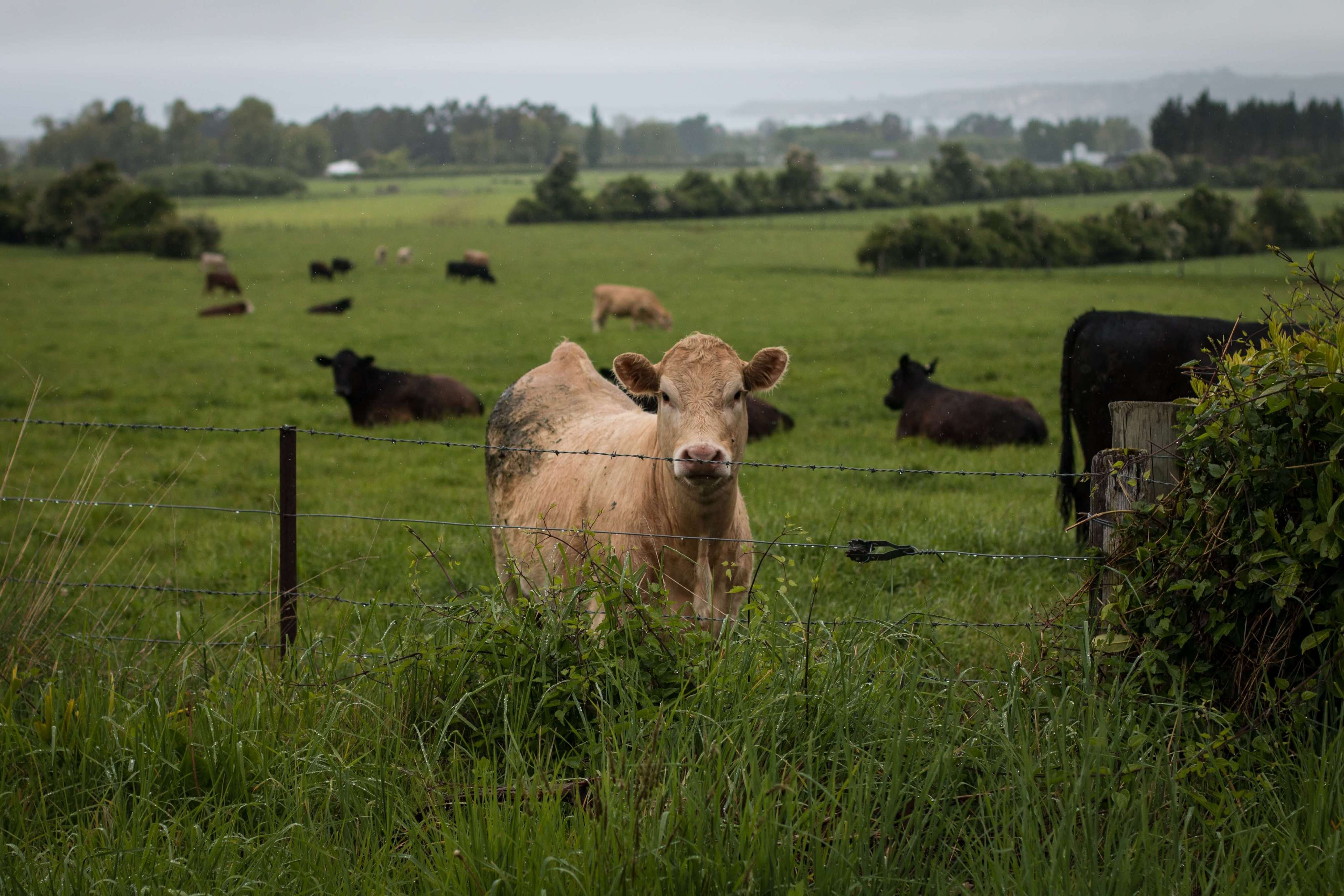
How to Restore the Natural Cycle
The problem with machines is they do not shit. They let out carbon dioxide or carbon monoxide into the air, but nothing goes back into the soil. When animals worked on the land, whatever they ate was put back in a different form into the soil, and a whole lot of organisms were waiting for that. This is the way creation is: what one organism excretes is food for another organism. When it dies, of course, its body becomes the food.
There cannot be a better design because it is a self-sustaining, circular economy of existence. Today we have disrupted it hugely, at various levels. One significant disruption is that 54% of the world’s soil is under full-on agriculture. Another 18–20% is partial agriculture. So, over 72% of the world’s land is plowed.
There are only two sources of organic content: plant life and animal life. There is simply nothing else.
Shekhar Gupta: Arable land?
Sadhguru: Yes, leaving the forest aside, of course. And 4.2% of the world’s land is paved because it is urban area. So together, more than 75% of the world’s land is either plowed or paved, which means there is no photosynthesis, no plant life, and largely, no animal life either. You may take a dog for a walk and it poops around, but that is not the solution. It needs large-scale circulation of excrement. That can only happen if there are a substantial number of animals, and plant life as well.

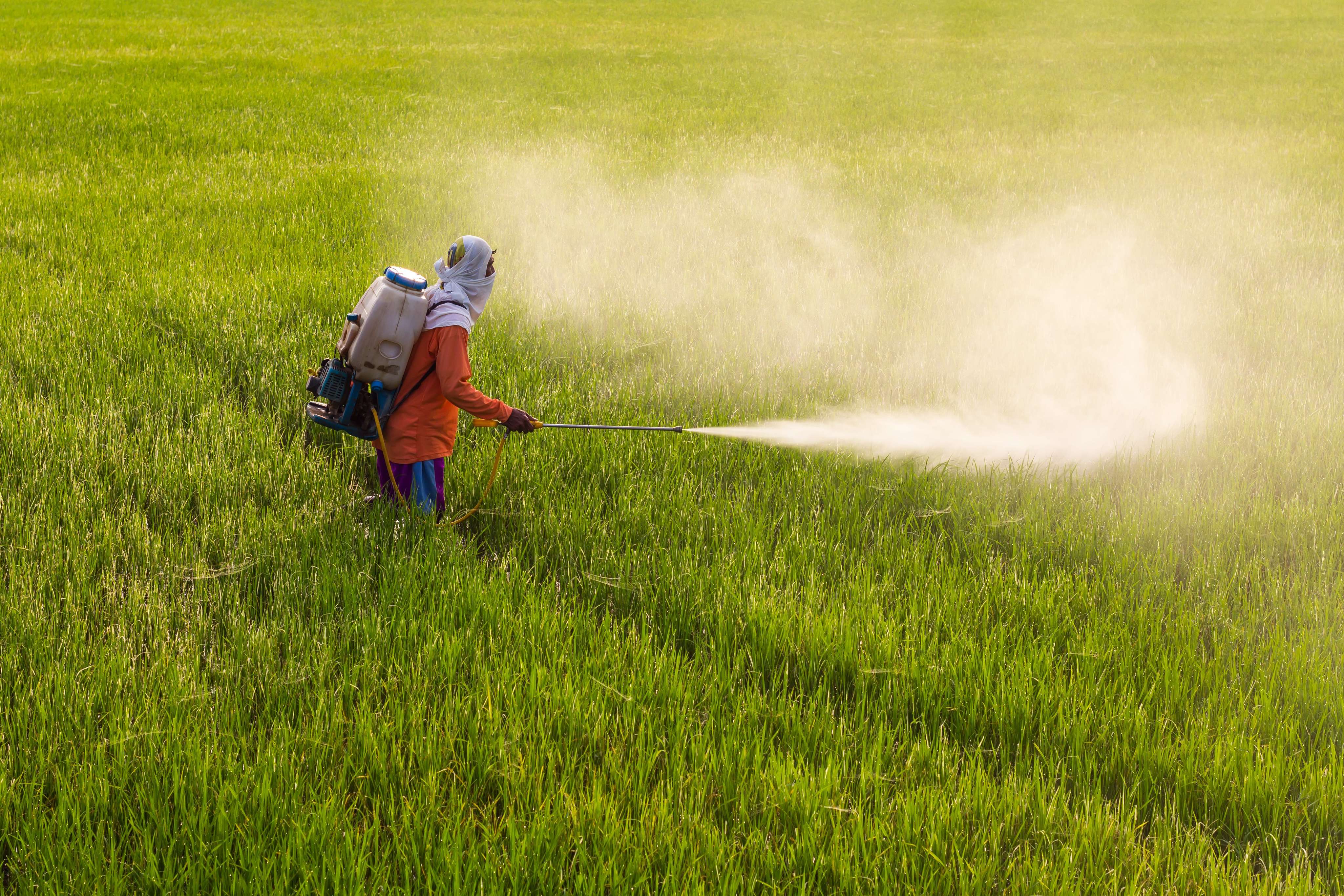
A Helpful Invention Gone Wrong
Why did plants and animals disappear? Somewhere in 1918, a German scientist came up with nitrogenous fertilizers. When people took it and threw it on their lands, crops just burst out. It was something people had never seen before. This was the Green Revolution. In many parts of India, our yields went up by over 300%. It was literally magic powder.
Once you have this magic powder, you start throwing it everywhere, and everywhere crops burst out like that. So naturally, people got absolutely enamored with it. And also, we had devastating famines in the past, which took millions of lives. To get over our hangover of famines, we made policies as to how to use chemicals, and we did enhance the life expectancy in this country. In 1947, it was 30 years – can you believe that?
Now, in these 75 years, we have reached an average life span of 70 years, which is a great achievement for any nation. That Green Revolution was an effort to bridge across famine situations. You get onto a bridge to get to the other side. But if you get onto a bridge and never get off, then you are on a bridge to nowhere. This is the mistake we and the whole world have made, one way or the other. It is time to get off the bridge now.


Can Robotics Make Agriculture Eco-Friendlier?
Today, we have enough capabilities to plan the global agricultural production and transport food where we want. Now that we have these capabilities, it is time for us to see how to regenerate the soil. We must bring back plant life and animal life, but the animals need not work anymore. Work is being done by machines; it is just that the machines that we have employed are so crude that they turn the land upside down.
We must bring back plant life and animal life.
It is time robotics gets into agriculture, where it can work day and night. It can work like a man or woman in the agricultural field without disturbing the entire ecosystem like a tractor or other big machines do. We need to move in that direction.


How to Translate the Movement Into Global Action?
Neelam Pandey: As we are talking about Save Soil, the first question that comes to my mind is how difficult it is to start a movement, and to sustain it. You need to have influencers and some sort of political will backing the movement.
Sadhguru: This influencer aspect is to get the people to act. Without it, you would not get the administrations across the world to take notice. Once we have got the attention of the administrations, then the work is of a totally different nature. We have already begun that process, and it is a long haul. That will be the real hard work, which will not be in the public view.
Speaker: One of our subscribers wants to know… You’ve been speaking with global leaders – do you think there is a global consensus forming on this issue of Save Soil?
Sadhguru: Very much. I also spoke at COP15, and 197 parties participated there, including the EU, CARICOM[1], and the Commonwealth nations.
Shekhar Gupta: COP26?
Sadhguru: No, this is UNCCD[2] COP15.
[1] Caribbean Community, an intergovernmental, political, and economic union of 15 member states
[2] United Nations Convention to Combat Desertification

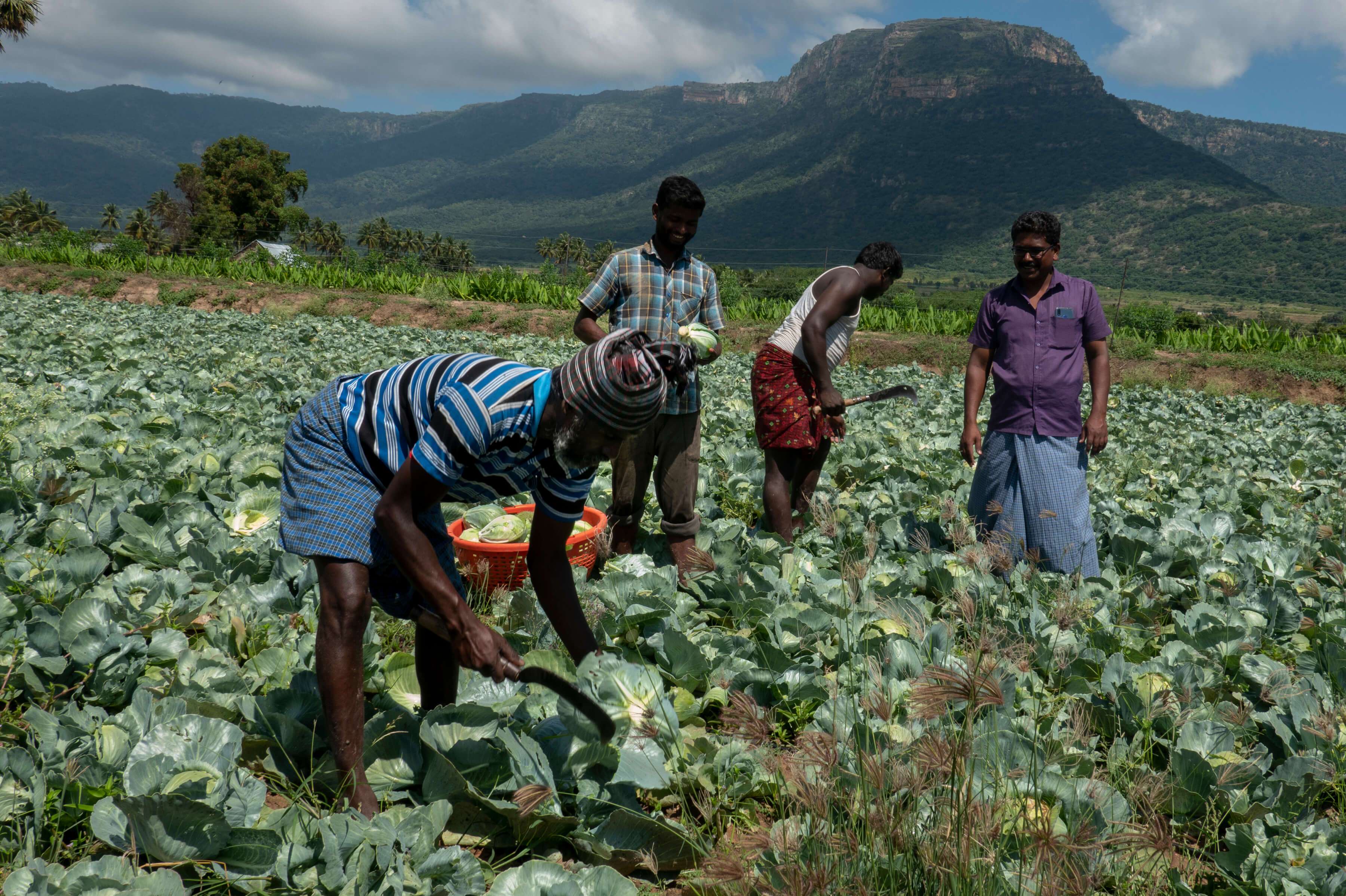
What Is More Important: Climate or Soil?
Sadhguru: All attention is on COP26 because that is UNFCCC[1], which is all about climate. How can you talk about climate without addressing soil when nearly 40% of climate change and global warming happens because of soil degradation? If you don’t know the science of climate change… Right now, you’re in Delhi. Stand in the hot sun for one hour; then move under tree shade – you will know what climate change is. There’s a minimum of 3–4 degree difference.
Soil needs to be moist; it needs to be covered; it needs either cover crops in summer or tree-based agriculture.
The land and the organisms need some shade for organic activity to go on. And there must be moisture – this is only possible when organic content is high; otherwise, the soil becomes dry. If you dig in agricultural fields around Delhi, even if you go 15 inches deep, there is not an iota of moisture – it is totally bone dry. That means it is dead, as good as sand. Soil needs to be moist; it needs to be covered; it needs either cover crops in summer or tree-based agriculture.
[1] United Nations Framework Convention on Climate Change

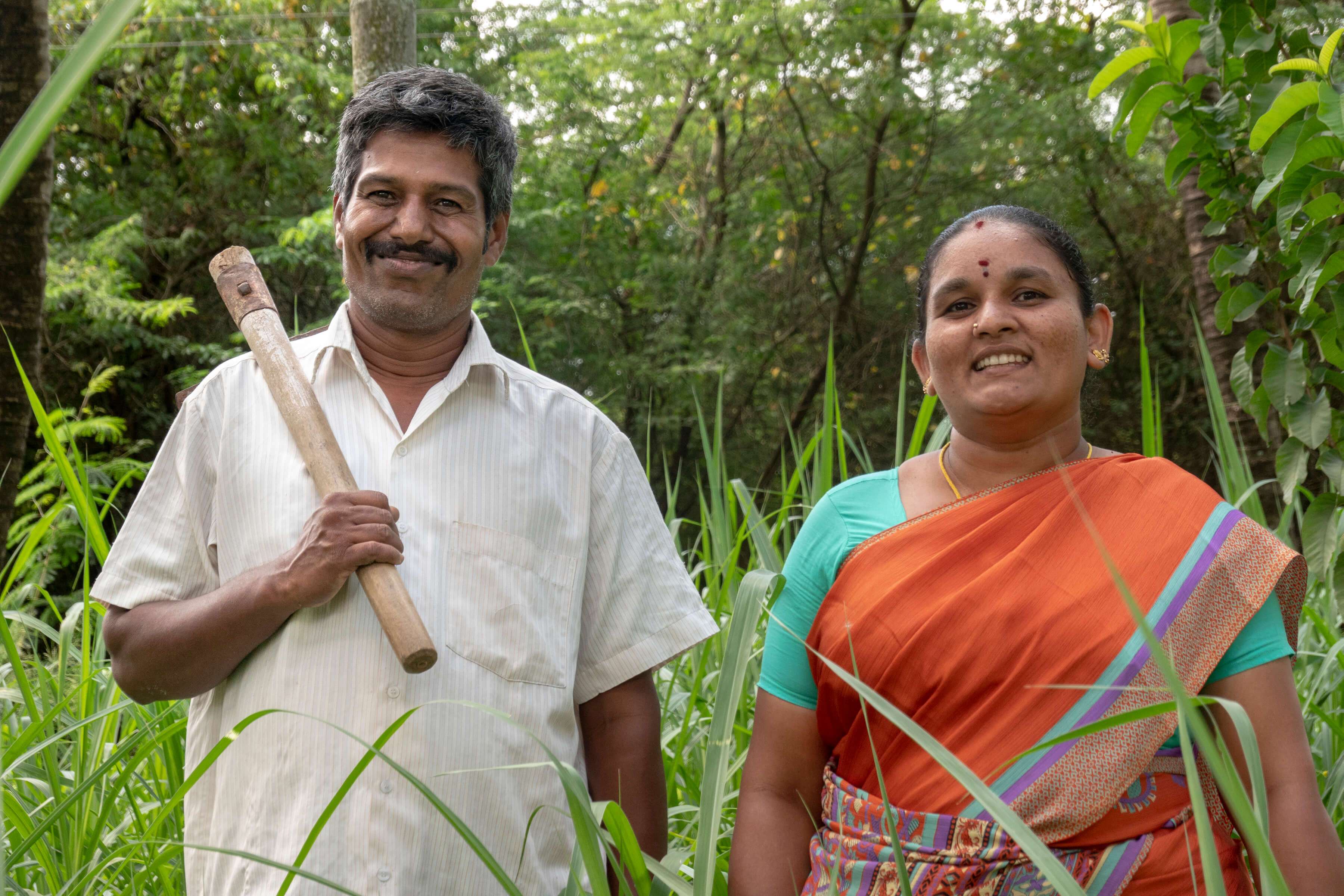
The Real Solution That’s on the Horizon
We have converted over 1.3 lakh farmers to tree-based agriculture. Just come and see the transformation.
Shekhar Gupta: I would like very much to come...
Sadhguru: You must come. Their incomes have gone up anywhere between 300–800%; the organic content has gone up; the nutritional value of the crops has gone up; the water tables have come up. I always believed that for water tables to come up, you would have to do plantations on a minimum of 50–100 acres. But in 5 acres of plantation, water tables have come up. This is the incredible nature of the land.

